Imagine stepping into a minimalist kitchen where every surface feels effortlessly calm. Cabinets glide open with a gentle push, appliances disappear into the walls, and there’s no visual noise of handles or knobs. This isn’t a futuristic fantasy—it’s the magic of minimalist design, a philosophy transforming homes into sanctuaries of simplicity and purpose.
But here’s the secret: Minimalism isn’t about empty spaces or cold sterility. It’s about curating your surroundings to remove distractions and celebrate what truly matters. At the heart of this movement lie hidden designs and handleless cabinetry—two elements that elevate everyday living into an art form. Let’s explore how these ideas work, why they’re redefining modern homes, and how you can bring their quiet luxury into your own space.
- What Minimalist Aesthetics Really Mean
- Hidden Designs: Where Form Meets Function
- Handleless Cabinetry: The Sleek Soul of Minimalism
- Debunking Minimalist Myths: “Isn’t It Too Cold?”
- Bringing Hidden Designs into Your Home
- Choosing Materials for Handleless Cabinetry
- Practical Maintenance: Keeping It Pristine
- Real-Life Success Stories
- Is Minimalist Kitchen Design Right for You?
- The Future of Minimalism
- Final Thoughts: Minimalism is a Lifestyle
What Minimalist Aesthetics Really Mean
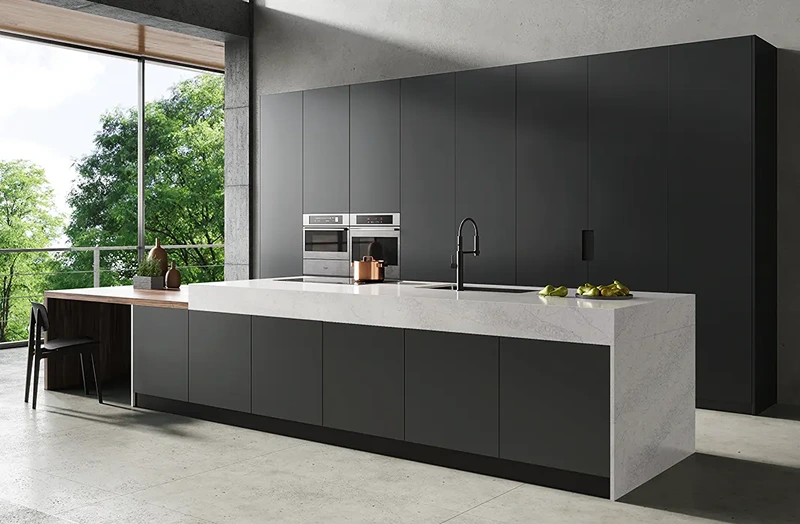
Minimalism is more than a trend—it’s a mindset. It’s about stripping away the unnecessary to highlight quality, functionality, and beauty. Think clean lines, muted tones, and spaces that breathe. But today’s minimalist kitchens aren’t stark or impersonal. They’re warm and inviting, blending textures like oak wood, matte metals, and soft linen to create harmony.
The goal? To design rooms that feel intentional. No cluttered countertops, no mismatched hardware. Just clarity, calm, and a focus on craftsmanship.
Hidden Designs: Where Form Meets Function
Hidden designs are the unsung heroes of minimalist interiors. They work silently to keep your space tidy while maintaining a flawless aesthetic. Here’s how they transform modern kitchens:
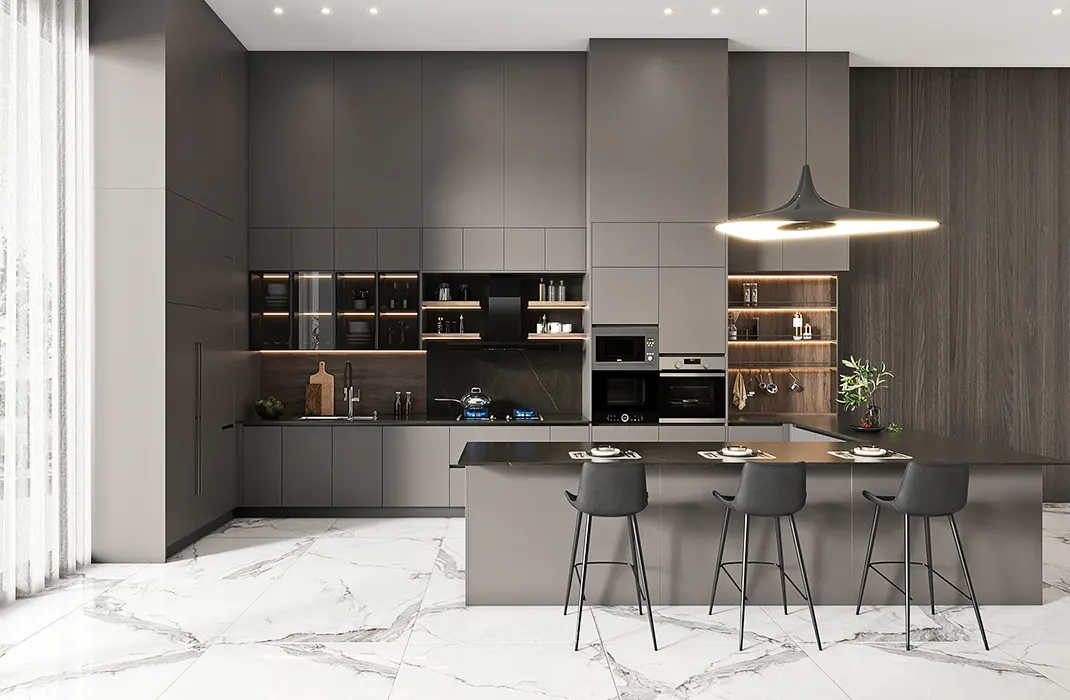
1. Invisible Storage Solutions
- Floor-to-Ceiling Cabinets: Push-to-open mechanisms conceal everything from blenders to bulk groceries, creating a seamless look.
- Appliance Garages: Custom nooks hide coffee makers or toasters, ensuring countertops stay pristine.
Pro Tip: Use vertical space. Slim pull-out pantries or tall cabinets maximize storage without sacrificing style.
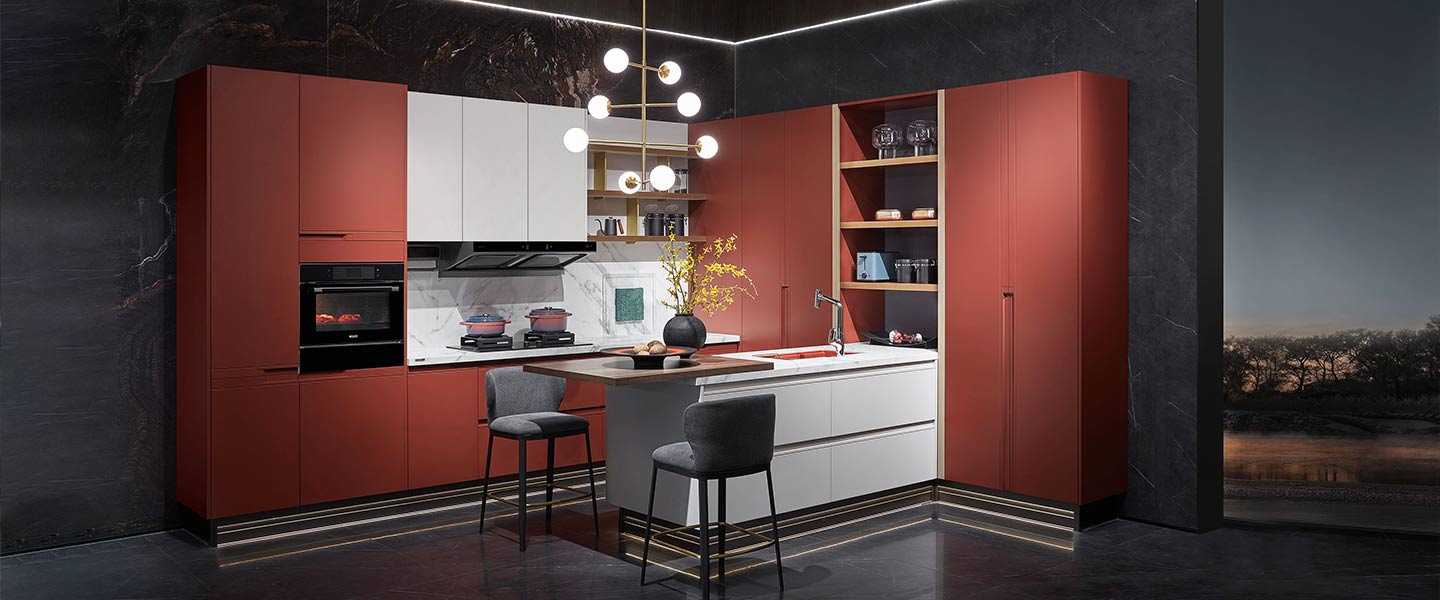
2. Integrated Appliances: The Ultimate Camouflage
Ever seen a refrigerator that looks like part of the cabinetry? Brands like Gaggenau and Miele design appliances with customizable panels that match your kitchen’s finish, erasing visual clutter.
Why It Works: By blending appliances into the walls or cabinets, the kitchen becomes a cohesive canvas—not a jumble of stainless steel and plastic.
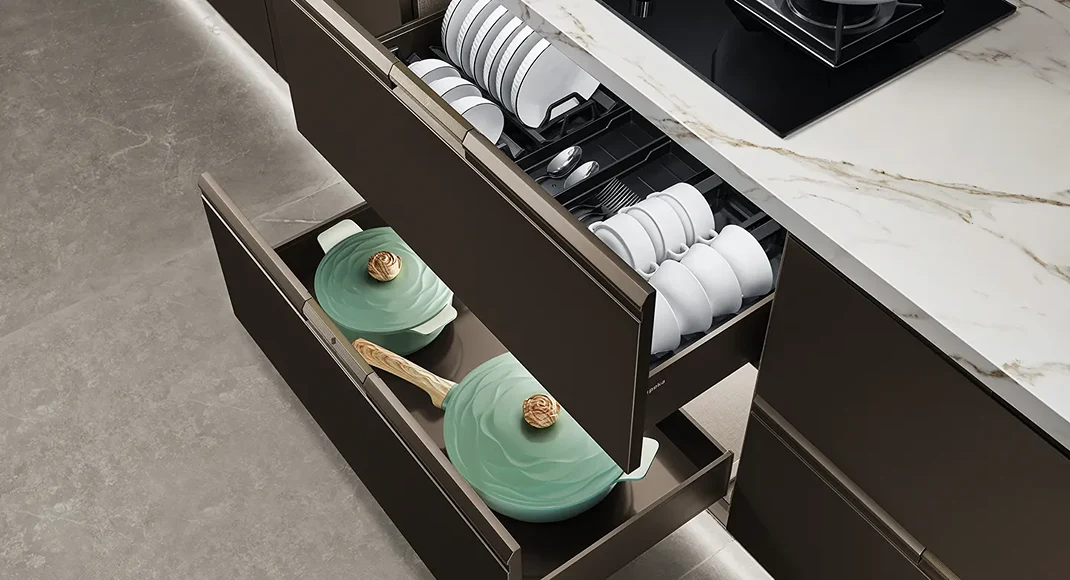
3. Secret Compartments (Yes, They’re Real!)
- Pull-out spice racks beside the stove.
- Drawers within drawers for organizing utensils.
- Pop-up outlets in islands for charging devices.
These small touches add up to big impact: less mess, more peace.
Handleless Cabinetry: The Sleek Soul of Minimalism
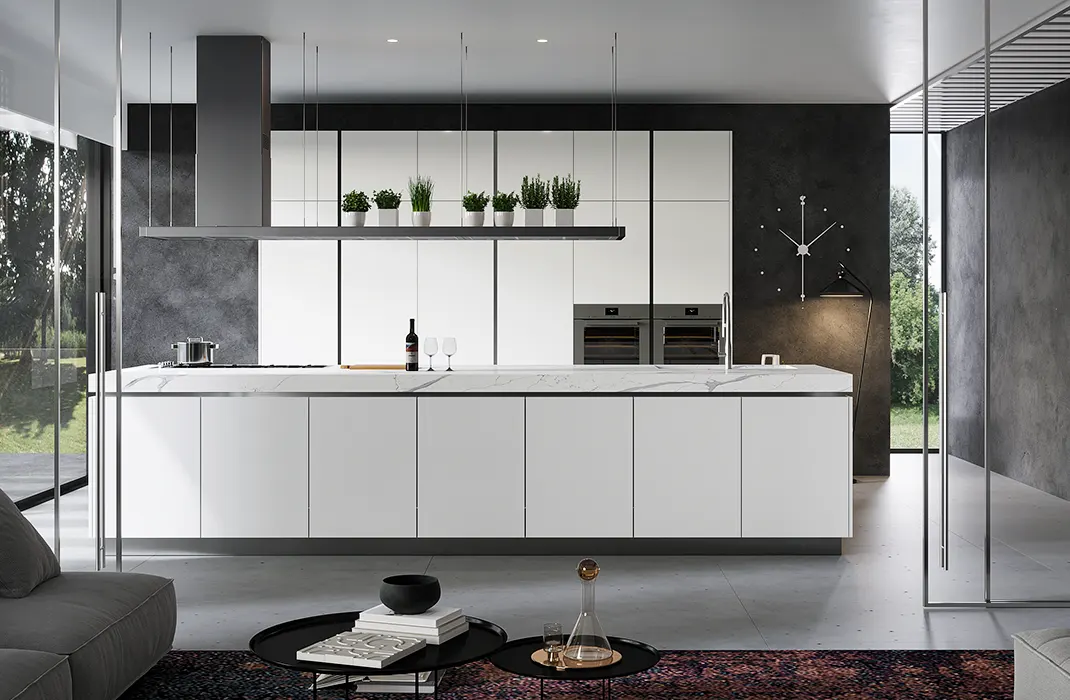
Handles might seem trivial, but they’re like jewelry for cabinets—and sometimes, less is more. Handleless designs use innovative mechanisms to ditch knobs, creating smooth, uninterrupted surfaces.
How Do You Open a Handleless Cabinet?
- Push-to-Open: Press lightly, and a spring releases the door.
- Recessed Grips: A subtle groove along the cabinet edge lets fingers grip without visible hardware.
Bonus: No handles mean fewer crevices for crumbs or grease—a win for easy cleaning!
Why Handleless Design is a Game-Changer
- Safety: No sharp edges for kids to bump into.
- Timelessness: The streamlined look won’t go out of style.
- Space Illusion: Without handles breaking sightlines, small kitchens feel expansive.
Debunking Minimalist Myths: “Isn’t It Too Cold?”

Let’s address the elephant in the room: Minimalism doesn’t mean sacrificing warmth. Here’s how to keep it cozy:
- Mix Textures: Pair smooth handleless cabinets with a rough-hewn wooden island or woven baskets.
- Warm Lighting: Use pendant lights with linen shades or under-cabinet LED strips for a soft glow.
- Natural Accents: Add plants, stone countertops, or handmade ceramics to ground the space.
Real-Life Example: A family in Copenhagen paired white handleless cabinets with warm oak open shelving and a terracotta backsplash. The result? A kitchen that’s minimalist yet inviting.
Bringing Hidden Designs into Your Home
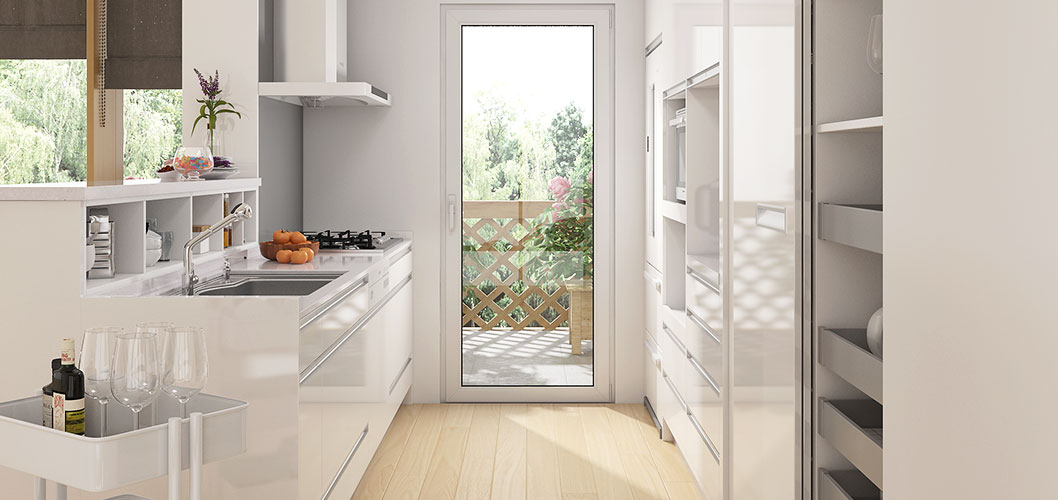
You don’t need a full renovation to embrace minimalist kitchen aesthetics. Start small:
1. Declutter Ruthlessly
Ask: Do I really need three vegetable peelers? Donate duplicates and unused gadgets.
2. Upgrade Storage
- Install pull-out shelves for pots and pans.
- Use drawer dividers to organize utensils without chaos.
3. DIY Handleless Hacks
- Replace cabinet handles with recessed grips (available at hardware stores).
- Use magnetic strips inside cabinets to store knives or spice jars out of sight.
Choosing Materials for Handleless Cabinetry
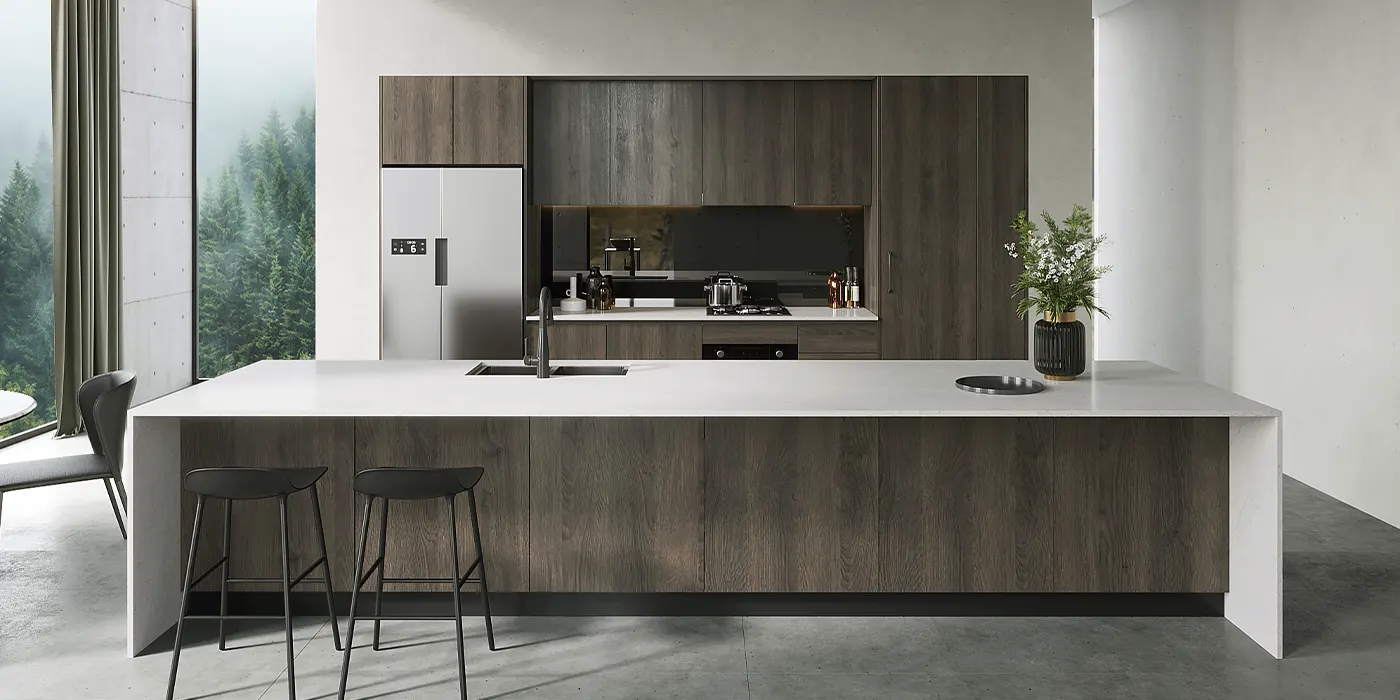
The right materials make or break the minimalist kitchen look:
- Matte Finishes: Fingerprint-resistant and understated (try laminates or painted wood).
- Wood Veneers: Add warmth while keeping surfaces sleek.
- High-Gloss Lacquer: Reflects light but shows smudges—ideal for low-traffic areas.
Pro Tip: Test samples under your home’s lighting. A gray cabinet might look blue under cool LEDs!
Practical Maintenance: Keeping It Pristine
- Fingerprints: Matte finishes hide smudges better than glossy ones.
- Sticky Drawers? Apply silicone spray to tracks for smooth operation.
- Deep Cleaning: Wipe surfaces with a microfiber cloth and mild soap—no harsh chemicals needed.
Real-Life Success Stories
1. The Urban Apartment (New York, NY)
A 600-square-foot studio used floor-to-ceiling handleless cabinets and a hidden fold-down table. Result? A minimalist kitchen that doubles as a home office and dining area.
2. The Family Minimalist Kitchen (Melbourne, Australia)
A busy family opted for push-to-open cabinets and an appliance garage. Now, countertops stay clear, and kids can’t yank on handles.
3. The Luxury Renovation (Milan, Italy)
A high-end minimalist kitchen features integrated refrigeration and a pop-up vent hood. Guests often ask, “Where’s the stove?”
Is Minimalist Kitchen Design Right for You?
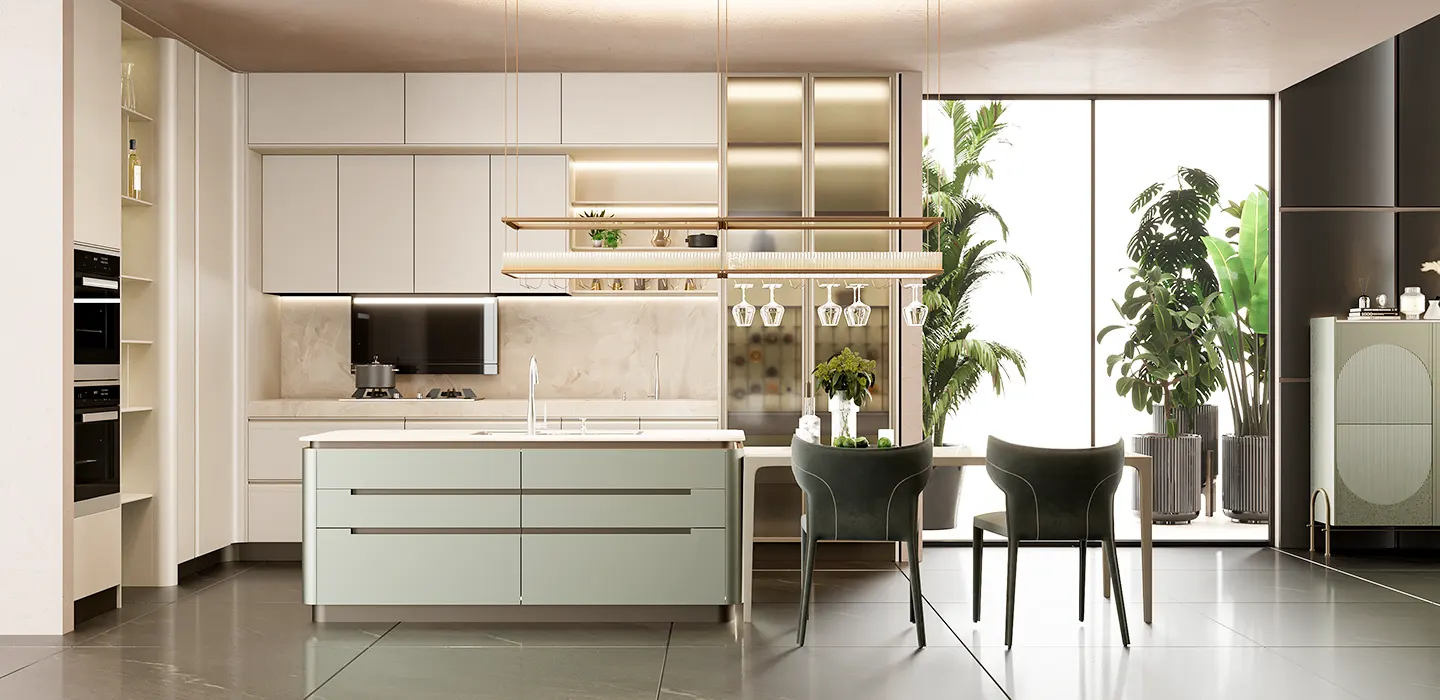
Ask yourself:
- Do I value simplicity over ornamentation?
- Am I willing to declutter regularly?
- Do I prefer clean lines to traditional details?
If you answered yes, a minimalist kitchen with hidden designs and handleless cabinetry could transform your home.
The Future of Minimalism
The trend is evolving with new innovations:
- Smart Integration: Voice-controlled cabinets that open hands-free.
- Sustainable Materials: Recycled aluminum and carbon-neutral finishes.
- Customization: 3D-printed handles that blend seamlessly into doors.
Final Thoughts: Minimalism is a Lifestyle
Minimalist aesthetics aren’t about perfection—they’re about creating spaces that serve you. A minimalist kitchen with hidden designs and handleless cabinetry are tools to reduce stress, save time, and let your home’s true beauty shine. Whether you’re renovating or simply rethinking your space, remember: The goal isn’t a sterile showroom. It’s a home that feels calm, functional, and unmistakably yours.
So, the next time you glide open a handleless cabinet or tuck a gadget into its hidden nook, take a moment to savor the quiet joy of simplicity. In a world of noise, your home can be a sanctuary of calm—one thoughtful design choice at a time.